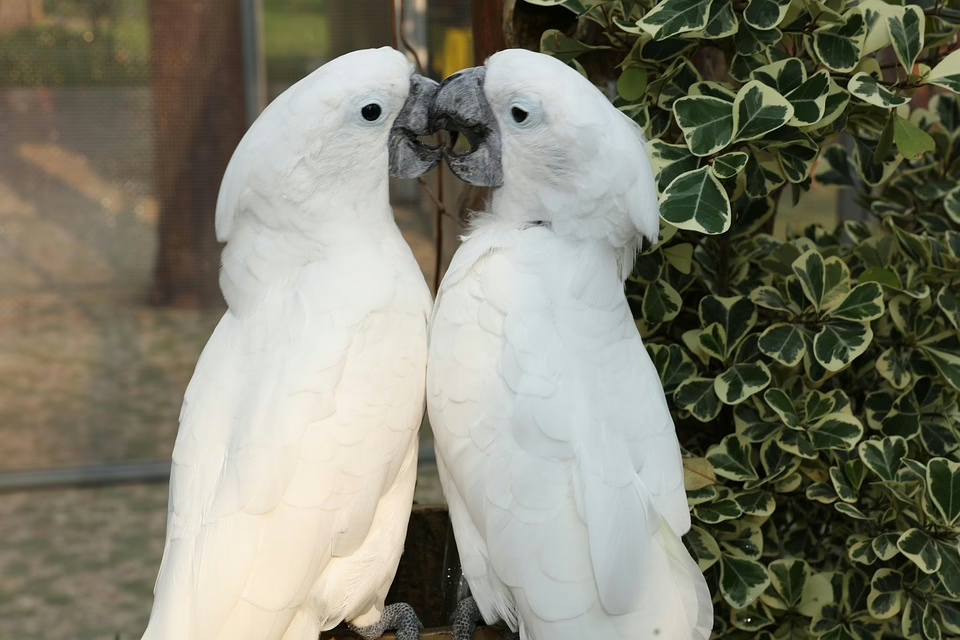From the Rare to the Remarkable: A Journey Through Nature’s Oddities
Nature has an extraordinary capacity for creativity, presenting a tapestry of life that boasts stunning diversity and oddities that challenge our understanding. The world we inhabit is filled with occurrences and organisms that shine as remarkable manifestations of resilience, adaptation, and beauty. This article embarks on a journey through some of nature’s rarest and most extraordinary phenomena, from peculiar animal behaviors to unusual plant life, exploring the stories behind these extraordinary entities and their implications for our understanding of life on Earth.
The Allure of the Uncommon
Throughout history, the rare and remarkable aspects of nature have captivated the human imagination. From ancient myths to modern scientific discoveries, the allure of the unconventional has inspired countless tales, research endeavors, and conservation efforts. Scientific curiosity often drives the quest to uncover and understand the oddities of nature. As researchers delve into the peculiarities of certain species, they uncover remarkable adaptations, life cycles, and behaviors that provide insights not just into biology but into the interconnectedness of life on our planet.
Unusual Animal Adaptations
- The Axolotl: Nature’s Regeneration Marvel
The axolotl (Ambystoma mexicanum), a neotenic salamander native to Mexico, is a remarkable example of how some species have evolved to possess extraordinary regenerative capabilities. Unlike most animals, axolotls can regenerate entire limbs, spinal cords, heart tissue, and even parts of their brain. This ability is not just a curiosity but holds the potential for medical breakthroughs in regenerative medicine.
Research into the axolotl’s regenerative properties has unveiled complex molecular mechanisms that allow these creatures to heal without scar tissue formation. Studies suggest that understanding these processes could lead to advancements in treatments for human injuries and degenerative diseases[^1].
- The Naked Mole Rat: A Hairless Marvel
Living in the arid underground burrows of East Africa, the naked mole rat (Heterocephalus glaber) is almost hairless with wrinkled skin and a set of protruding teeth. This unusual rodent has gathered attention not just for its bizarre appearance but for its extraordinary longevity and resistance to cancer. Naked mole rats can live over 30 years, significantly longer than other rodents, and they showcase resistance to cancer, an anomaly that researchers are trying to unlock.
The social structure of naked mole rats is also unique. They live in colonies similar to bees or ants, with a single breeding queen and non-reproductive worker individuals. This eusocial behavior raises intriguing questions about the evolution of social structures in mammals[^2].
- The Immortal Jellyfish: A Case of Biological Rebirth
Turritopsis dohrnii, commonly known as the immortal jellyfish, has captured attention for its astonishing capability to revert back to a juvenile state after reaching maturity. When faced with environmental stressors or physical damage, this jellyfish can undergo transdifferentiation—a process that allows its cells to transform into different types—and thus effectively avoid death and begin its life cycle anew.
Scientists are studying the immortal jellyfish to understand how its cellular processes might inform research on aging and cellular regeneration, with potential applications in extending the human lifespan or improving regenerative medicine[^3].
Extraordinary Plant Life
- The Corpse Flower: Nature’s Fragrant Oddity
The corpse flower, or Rafflesia arnoldii, is notorious for its size and foul odor, which resembles decaying flesh. Native to the rainforests of Sumatra and Borneo, this parasitic plant can grow up to three feet in diameter. Its unique smell attracts carrion flies, which are drawn to the scent to aid in the plant’s pollination.
Despite its off-putting odor, the corpse flower serves an essential role in its ecosystem. Its fascinating reproductive cycle and the symbiotic relationships it shares with various organisms highlight the intricate balance found within nature[^4].
- Welwitschia: A Living Fossil
Welwitschia mirabilis, a plant native to the Namib Desert, stands out for its hardiness and longevity. Some individuals have been known to live for over a thousand years. This remarkable plant consists of only two leaves, which continue to grow throughout its lifetime, leading to a unique appearance that often resembles a tangle of ribbons.
Adapted to survive arid conditions, Welwitschia can absorb moisture from fog, making it a true testament to the resilience of life. Its evolutionary path resembles that of ancient plants, drawing interest from botanists seeking to understand survival mechanisms in extreme environments[^5].
Sensational Symbiosis: Odd Partnerships in Nature
- The Pistol Shrimp and Goby: A Remarkable Alliance
In the underwater world, certain species have developed unique symbiotic relationships, such as the partnership between the pistol shrimp and its goby partner. The shrimp digs and maintains a burrow shared with the goby, which has excellent eyesight. The goby serves as a lookout, alerting the shrimp of potential threats while the shrimp provides a safe dwelling.
This mutualism not only enhances survival for both species but also highlights the intricacies of cohabitation and evolution. Such partnerships are prevalent in nature, offering insights into adaptive strategies that aid species survival[^6].
- The Ants and Aphids: Guardians and Grazers
A fascinating example of mutualism is seen in the relationship between ants and aphids. Ants “farm” aphids for their sugary excretions, known as honeydew. In return, ants protect aphids from predators, ensuring a continuous supply of food. This complex interaction showcases not only resourcefulness but also a deeper understanding of ecological relationships and food webs[^7].
Phenomena of the Natural World
- Bioluminescence: The Glow of Life
Bioluminescence, the ability of certain organisms to produce light, serves both practical and aesthetic functions. From fireflies flashing in synchrony to glowing mushrooms and deep-sea creatures, bioluminescence plays a significant role in attracting mates, luring prey, and evading predators.
The mechanisms behind bioluminescence involve complex biochemical reactions, primarily utilizing a light-emitting molecule called luciferin. Understanding how these natural light displays work presents opportunities for various applications, including medical imaging and sustainable lighting solutions[^8].
- The Migratory Marvels: Monarch Butterflies
Migration is one of nature’s most incredible feats, exemplified by the monarch butterfly (Danaus plexippus). Every year, millions of these butterflies travel thousands of miles from North America to central Mexico, demonstrating an astonishing ability to navigate using environmental cues such as the sun and Earth’s magnetic fields.
This remarkable migration is not just a testament to the resilience of the species but also an indicator of environmental health. Research into their habitats and migration patterns aids in conservation efforts, as the decline of monarch populations raises concerns about broader ecological impacts[^9].
Conservation and the Call to Action
As we uncover the rare and remarkable aspects of nature, it becomes increasingly essential to address the threats posed to these unique entities. Habitat destruction, climate change, pollution, and invasive species are just a few challenges that jeopardize biodiversity.
The Role of Conservation Efforts
Conservationists and scientists are working tirelessly to protect vulnerable species and their habitats. Initiatives such as habitat restoration, captive breeding programs, and legislative measures are vital in ensuring the survival of these outstanding organisms.
- Community Engagement: A Path Forward
Engaging local communities in conservation efforts is critical. Education programs highlight the significance of preserving unique ecosystems while promoting sustainable practices. Empowering individuals to appreciate and protect their environment can lead to transformative change at both local and global scales[^10].
- Scientific Research: A Tool for Understanding
Ongoing research into rare species and ecosystems provides valuable information on their ecology and potential vulnerabilities. This knowledge is essential for developing effective conservation strategies and gaining support for initiatives aimed at safeguarding biodiversity. Collaborative studies not only expand our understanding of nature’s oddities but also create a sense of shared responsibility towards the planet’s future[^11].
Conclusion: Embracing the Extraordinary
The journey through nature’s oddities reminds us of the complexity of life on Earth. From the extraordinary adaptations of species to the intricate relationships that sustain ecosystems, our understanding of the natural world is continuously evolving. By celebrating and conserving these unique entities, we can ensure that future generations also have the opportunity to marvel at the wonders of nature.
In a time when the environment faces unprecedented challenges, our commitment to preserving these remarkable aspects of life becomes crucial not just for the sake of the species themselves but for the health of our planet and the interconnected web of life that sustains us all. Let us cherish and protect the rare and the remarkable, for they are not merely curiosities; they are vital threads woven into the fabric of our shared existence.


























Add Comment